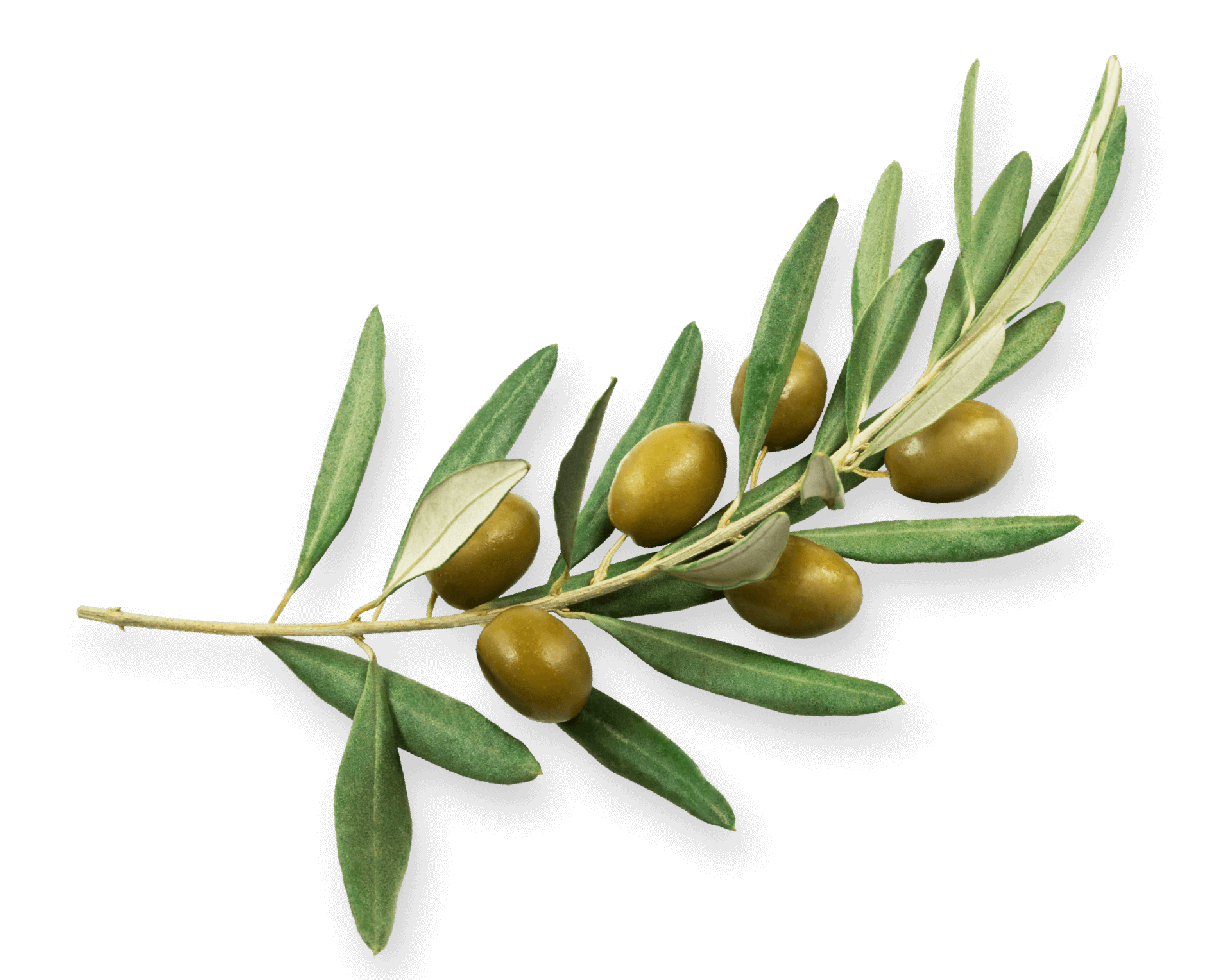
Olive Tree
The olive tree is a plant of character and has a 5,000-year history:
The olive tree (Olea europea) presumably originated around 3000 BC in the region of today’s Syria/Palestine/Israel through the cultivation of two species growing in the wild. After that, the plant slowly spread throughout the entire Mediterranean region. Olive saplings were planted in California and Argentina during the Renaissance. The cultures in South Africa and Australia are even younger.
The olive tree is considered to be extremely robust and can live up to 2,000 years. It reaches its full yield capacity just at about age 15. It is content with barren soil and endures temperatures as low as minus 8 °C. Green and black fruits stem from the same tree. Young fruits are green and turn red, then purple and finally black with increasing maturity.


OliveFrom bitter natural state to a fine fruit for connoisseurs, palate and healthRaw olives fresh from a tree are not edible due to their bitter substances. That is why the harvested fruits are initially sorted according to size; then they are debittered in a leach solution, and the olives are washed and eventually preserved in brine to ferment for about 3 months. About 90% of the olive harvest is pressed to make olive oil. Dumet is among the leading processors and refiners of the remaining ten percent of the harvest. This results in the finest table olives, which, by the way, are harvested exclusively by hand and may not show any damage whatsoever.
Tip: Are the olives too salty? Water the olives directly in a stand-up pouch for about 30 seconds – 20% less salt is guaranteed! But then the olives should be immediately consumed.
Learn more about our olives and their character. |
 |

Olive oil
A delicious as well as healthy natural product
Cold-pressed olive oil is not only among the most valuable salad oils, but thanks to a relatively low percentage of polyunsaturated fatty acids it is also particularly well-suited for roasting and frying. The positive effect of olive oil on circulation, digestion, bone structure and skin has been demonstrated in numerous studies.
Of course, quality is crucial for these positive properties and the excellent aroma: in order to obtain good olive oil, olives are harvested early (“first harvest) and cold-pressed or cold-centrifuged, i.e. at a maximum temperature of 27 °C.
Only the highest class is recommended, which depending on origin is called “Extra Vergine” (Italy), “Virgen Extra” (Spain) or “Natives Olivenöl Extra” (Germany).
Learn more about Dumet olive oil of the best quality.


Health
The hors d’oeuvre for palate and health
Olives are not just a delicacy, but also extremely healthy. For instance, cardiovascular diseases occur much more rarely in Mediterranean countries than in Central Europe. If nothing else, this effect is attributed to the increased consumption of olives. There are indications that the oleic acid brings about increased protection against arteriosclerosis.
In addition, the pulp of the olive is rich in many of the “good” monounsaturated fatty acids. These acids lower the “bad” LDL cholesterol levels. Moreover, olives contain an abundance of vitamin E, which contributes to strengthening the immune system.
The table below provides a brief overview of the degree of ripeness and nutritional value:
| Green olives | Blond olives | Black olives | |
| Characteristic | Firm pulp, low-fat | Shortly before ripeness | Ripe fruits, soft pulp |
| Flavour | Piquant, fruity | Mild, with subtle pungency | Mild to sweetish |
| Fat content per 100 g | 13 – 15 g | 15 – 20 g | 25 – 32 g |
| Calories per 100 g | 130 – 160 kcal | 160 – 200 kcal | 230 bis über 300 kcal, depending on variety |
Source: Pulstipp, Sept. 2001






